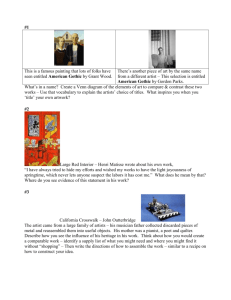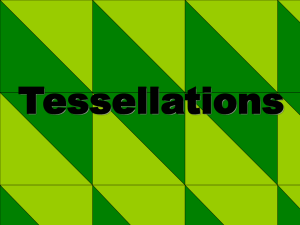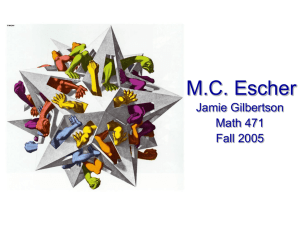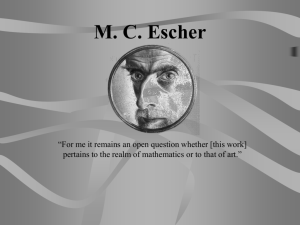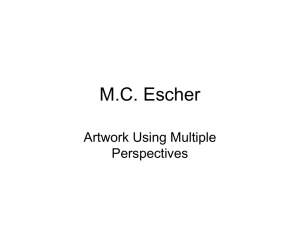Quilt pattern
advertisement
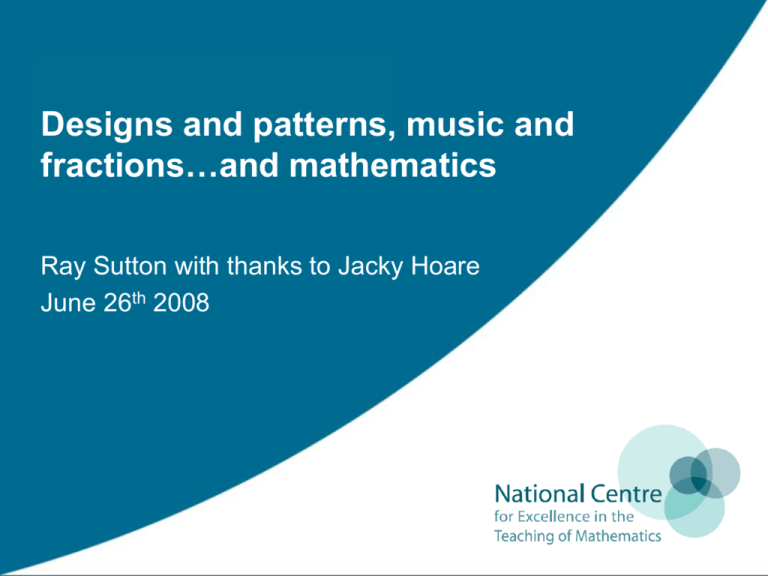
Designs and patterns, music and fractions…and mathematics Ray Sutton with thanks to Jacky Hoare June 26th 2008 Quilt pattern Have a look at the quilt and try to identify the details of the pattern. Given that this kind of quilt does not have to be stitched one square at a time, think of an efficient way of making it. Objectives To appreciate the richness of the links between mathematics and arts To experience relevant activities and reflect on how they might be adapted and extended for use in the classroom To explore relevant websites www.problempictures.co.uk/examples Websites www.earlywomenmasters.net/quilts/ www.philtulga.com (Time for music!) Patterns we see as we go The works of MC Escher www.tessellations.org Explore the art Identify the symmetries of translation, rotation, reflection, glide reflection Look for symmetries in an Escher pattern Try to match to one of the 17 plane symmetry patterns Create your own Escher pattern www.tessellations.org http://incompetech.com/graphpaper http://www.mcescher.com/, http://mathforum.org/geometry The works of MC Escher www.tessellations.org Explore the art Identify the symmetries of translation, rotation, reflection, glide reflection Look for symmetries in an Escher pattern Try to match to one of the 17 plane symmetry patterns Create your own Escher pattern Maths everywhere – from the graph paper website Calculating various bits about regular hexagons Given length of a side x... Tip to tip across the hex is 2x. Height of the hex flat side to flat side is 2x(sqrt(3/4)) or about 1.732x. Area of the hex is 1.5(x^2 (sqrt(3)) or about 2.56x^2. Example: Making graph paper with 4 hexes per square inch Hexagon with a side length of x... The area of that hex would be about... 2.6 (x^2) So for 4 hexes per square inch... 4 * 2.6 (x^2) = 1 x^2 = 1/10.4 x^2 = .096 x = .31 inches per side. Extra: 1 sq. in. per hex ~= 0.6204 www.pims.math.ca/pi/cartoons.html - copyright W.Krawcewicz, University of Alberta ray.sutton@ncetm.org.uk
